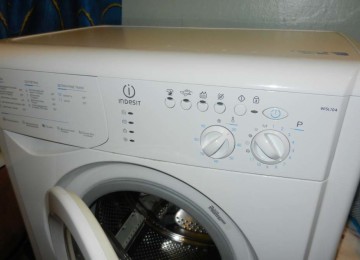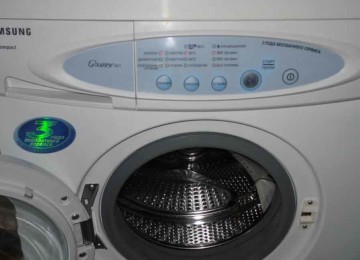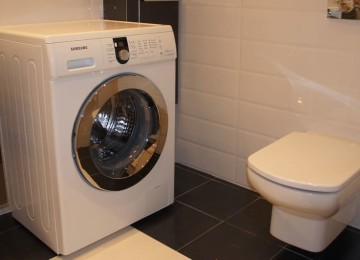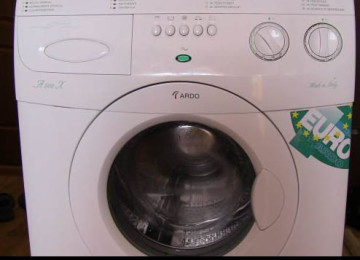A washing machine has long become a must-have appliance in every home. Modern man cannot imagine his life without it. Even a temporary breakdown of the machine causes significant discomfort to the user, so everyone tries to protect themselves as much as possible in this matter. Most problems arise due to contamination of equipment components. Regular and timely cleaning of the drum in a washing machine will significantly extend its service life, preventing many serious problems.
Causes of odor and dirt in washing equipment
Even a new machine begins to emit an unpleasant odor after a short time. This happens because the dirt that is washed from clothes most often settles on the parts of the machine. It remains on the seal, filter and in the drain hose.Usually the cause is a low washing temperature, which is simply not able to break down grease and dirt. Over time, these deposits accumulate, stagnate and encourage the development of harmful bacteria. They are the ones that cause the unpleasant odor. After a short time, mold and mildew develop. As a result, freshly washed items no longer smell clean. If you leave the finished wash in the drum for some time, it will acquire a specific musty smell.
Contrary to popular belief, more powder and rinse aid do not improve washing, but harm the device. Excess also settles on parts and causes problems in the near future.
Pins, laces, pieces of paper, threads, coins and other small items get stuck in the hose, becoming an additional cause of debris accumulation. This is especially true when a furry pet lives in the house or a lot of woolen items are washed. One way or another, dirt, lint, small debris and hair will certainly accumulate on the inner surface of the machine, so regular cleaning of the washing machine is more than necessary.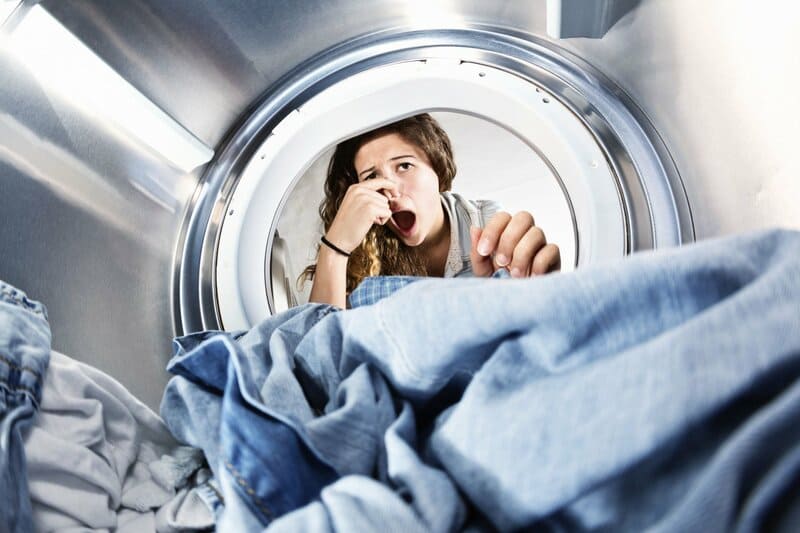
How do mineral and lime deposits appear in the machine?
On average, the washing machine runs 2 times a week. A large amount of tap water passes through it, which is most often characterized by increased hardness and the admixture of many foreign particles.
For example, we can recall the operation of a conventional electric kettle. Surely many have noticed how much garbage appears at its bottom in a short time. If we take into account that the machine is not supplied with filtered water, but with hard tap water, the situation with the latter is much worse.
Consumers are usually supplied with process water, which is obtained from groundwater or surface water. It is highly enriched with mineral salts, especially calcium and magnesium ions. At high temperatures they break down into carbon dioxide and insoluble sediment. It is this that forms scale on surfaces.
In addition, hard water reacts with detergents, leaving a gray color on things and significantly deteriorating the quality of the material. This is especially noticeable on light, thin clothing. After just a few washes, the item completely loses its appearance and even breaks.
Why is it so important to clean your washing machine drum?
Regular cleaning of the machine drum is a very good and effective prevention of many problems and breakdowns. Accumulated dirt negatively affects the quality of washing and becomes a breeding ground for the development of bacteria, mold and fungi. And this, in turn, poses a direct threat to the health of users. Quite often, for this reason, allergic reactions, rashes, headaches, exacerbations of chronic diseases and deterioration in health in general occur.
Items washed in a clogged machine can become very dirty from dirt in the area of the drum and seal.
The resulting solid deposits negatively affect the operation of equipment, reducing its efficiency significantly. The main problems that arise due to scale accumulation include the following:
- Rapid wear of the tank and drum pulley - closely located internal parts begin to rub against mineral deposits. Often with this phenomenon, you can hear extraneous sounds during the washing process.
- Imbalance - scale and mineral deposits are deposited in a thick layer on the drum, disrupting its balance, which, in turn, leads to jamming.
- Deterioration of water circulation during washing - the drum perforation becomes clogged with sediment, and the normal outflow of water is disrupted. Sand, rust and other solid debris can partially or completely block the drain, which leads to deterioration in the operation of the device and even to its breakdown.
- Increased energy consumption - over time, deposits become more and more, and, in order to perform its usual work, the device has to spend a lot of extra energy.
- Drain pump failure - with a clogged filter, the pump is subjected to enormous loads. It unsuccessfully tries to "push" the water. Naturally, after some time, the pump fails.
- Slow heating of water - even the thinnest layer of scale that forms on the heating element can worsen the process of heating water several times. This happens because the mineral sediment has lower thermal conductivity than the metal parts of the machine. As a result, the heating element overheats and the fuses break.
In addition, mineral deposits have an extremely negative effect on the operation of the equipment, provoke the appearance of rust and even damage the integrity of the insulation. This can lead to dangerous consequences in the form of a short circuit.
Cleaning the drum with folk remedies
Experts recommend cleaning the drum once every three months. To do this, it is not necessary to buy specialized household chemicals. You can effectively remove formations using the simplest budget products that are always available in every home.
Baking soda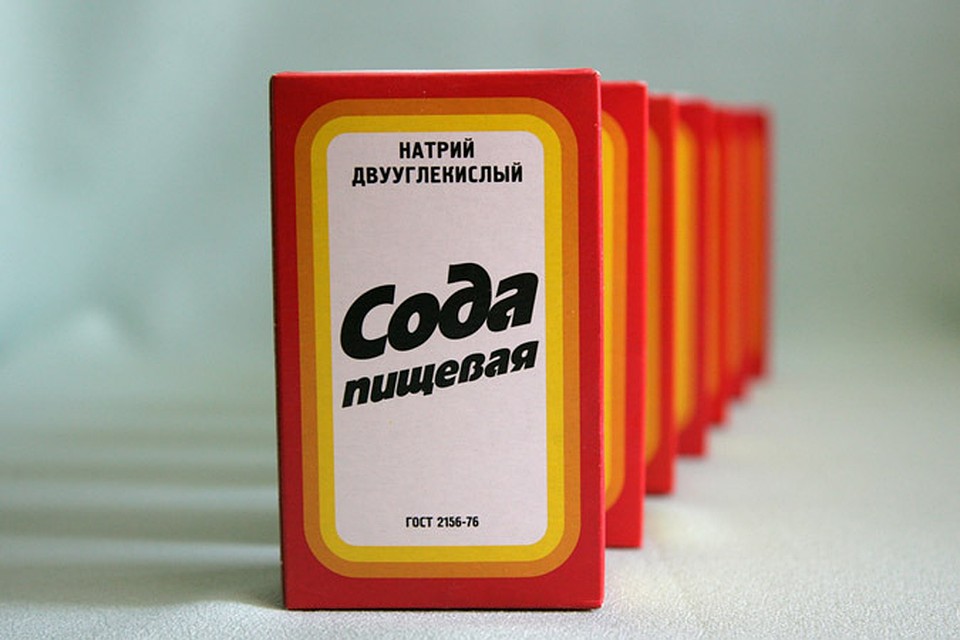
The most common way to care for an automatic washing machine is with baking soda. It is characterized as an environmentally friendly, effective and device-friendly product. In addition, as a result of using soda, the unpleasant odor completely disappears, and there is no need for a large number of rinses.
To begin with, you need to prepare a slurry from 150 grams of soda and a glass of water. The resulting concentrated mass must be thoroughly wiped across the entire accessible surface of the drum and seal. For the best effect, you should wait 15-20 minutes - during this time the alkali will have time to break down the deposits. After the procedure, the machine should be turned on for a full wash cycle. Usually one time is enough, but you can add an additional rinse.
Also, using an alkaline liquid, it is possible to thoroughly clean the powder tray and its mounting location. Removable parts can be temporarily placed in a container and filled with water and soda. After which they need to be taken out, washed several times and wiped dry.
There is another way to clean the drum with soda. Half a glass of soda is mixed with the same amount of water and poured into the powder cuvette. You need to add 200 grams of 9% vinegar to the drum of the machine. The device must be turned on for a long wash with the hottest water possible. At low temperatures, soda simply does not activate.
Acetic acid
Vinegar effectively fights mold, removes scale and disinfects. It perfectly cleans the tank, drum and heating element. But at the same time, it has a pronounced aggressive effect on all rubber parts of equipment, so vinegar must be used carefully, without exceeding the recommended dosages.
Pour 200 ml of 9% vinegar diluted with 600 ml of water into the powder tray. The machine must be turned on for the longest possible high-temperature washing mode. After 10-15 minutes, stop washing using the pause button for an hour - during this time, the vinegar essence will dissolve the deposits. After the cycle has completed, you must run an additional wash without adding any detergent or cleaning agents. The fact is that vinegar leaves a specific smell that is not easy to get rid of. The door must be left open for some time after the procedure to ventilate the machine.
Lemon acid
If your machine is regularly cleaned and there are probably no layers of old deposits in it, you can successfully use citric acid. This popular product does an excellent job of removing dirt, mold, grease, and scale on the drum and heating elements. Unlike vinegar, it does not spoil rubber bands, metal parts and components. In addition, lemongrass is completely harmless to the human body, and its cost is several times cheaper than other household cleaning products. It will not be possible to replace the powder with freshly squeezed lemon juice, since the acid concentration will be much lower. Accordingly, the effect will be very weak.
To work with a machine with an 8-kilogram load, you will need 200 grams of citric acid, respectively, smaller devices require a different amount.
Before starting the procedure, check the drum for missing items, since they will become discolored under the influence of acid. Half of the product should be poured into the powder compartment, the other half directly into the drum itself. The selected washing mode must certainly be spin.With a small amount of scale, a temperature of 60 degrees is allowed, if the situation is worse - no less than 90 degrees. After finishing the washing cycle, you should carefully check under the rubber bands of the seal: traces of scale may remain there. They need to be carefully wiped with a dry cloth.
After carrying out this procedure, it is advisable to immediately clean the drain filter and dry the removable tray for washing powder.
When working with acid, remember that using an excess amount can have an extremely negative impact on the internal parts of the device.
White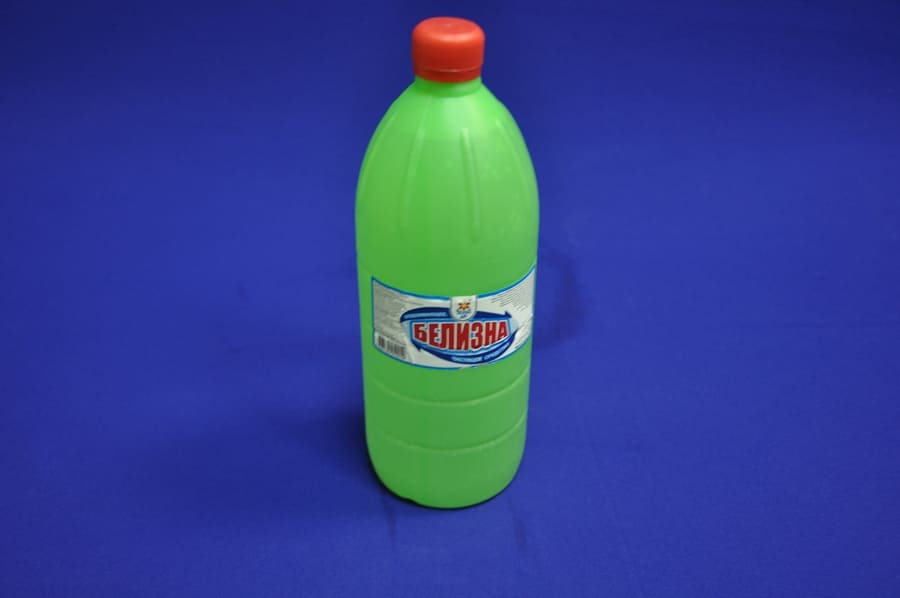
Cleaning the washing machine with bleach will remove lime and mineral deposits and help get rid of various pathogenic microorganisms, including dangerous mold. Any drug that contains chlorine to one degree or another will be effective. The only exception is highly foaming products. Their use is strictly prohibited.
To clean the washing machine with white, you should dilute it in equal proportions with water. It is recommended to use 250 ml of 0.5% white. The resulting solution must be poured into the powder compartment and the wash must be started at the highest possible temperature. Just as when using vinegar, 10 minutes after the start of the cycle, stop the machine using the pause button. After an hour, the wash is started again. At the end of the program, rinse twice to get rid of the chlorine smell.
There is also another way to use bleach. To do this, 100 ml of bleaching liquid must be poured directly into the drum. Select a long wash cycle at high temperature. After finishing, you need to run the rinse several more times.
It is important to remember that bleach can be used no more than once every six months.
Cleaning the drum using chemicals
If you don’t want to use traditional methods, you can buy ready-made cleaning and disinfectants at any household chemical store. Manufacturers create them taking into account all the technical features, using the safest components possible.
Chemicals can be used for general purpose or specifically for removing a specific type of contaminant. When purchasing, you should carefully study the information on the packaging. Many of them are recommended for use to soften water, but they cannot affect already formed deposits in any way.
The following are considered to be the most effective:
- Sano Antikalk Scale Remover
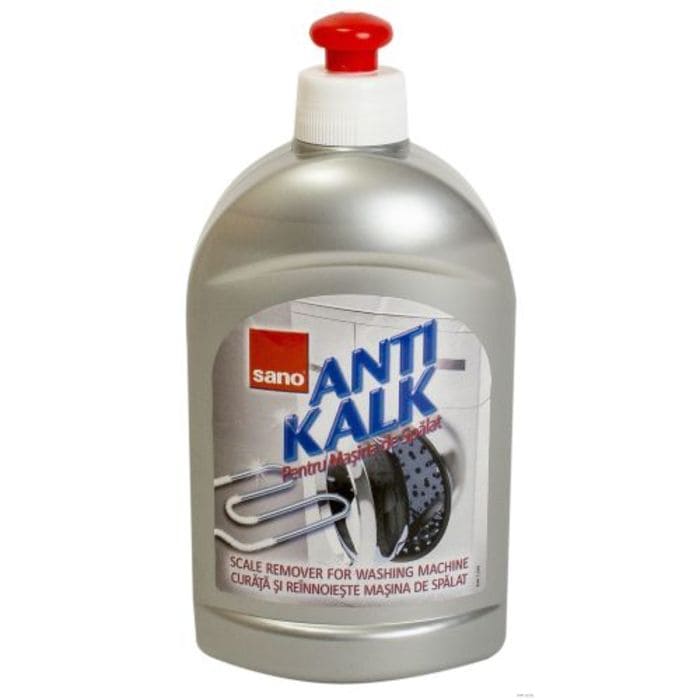 - Israeli product without harmful components. It effectively fights lime deposits on the drum, heating elements and body of the machine. The product prevents rust formation and is suitable for dishwashers.
- Israeli product without harmful components. It effectively fights lime deposits on the drum, heating elements and body of the machine. The product prevents rust formation and is suitable for dishwashers. - Dr. Beckmann
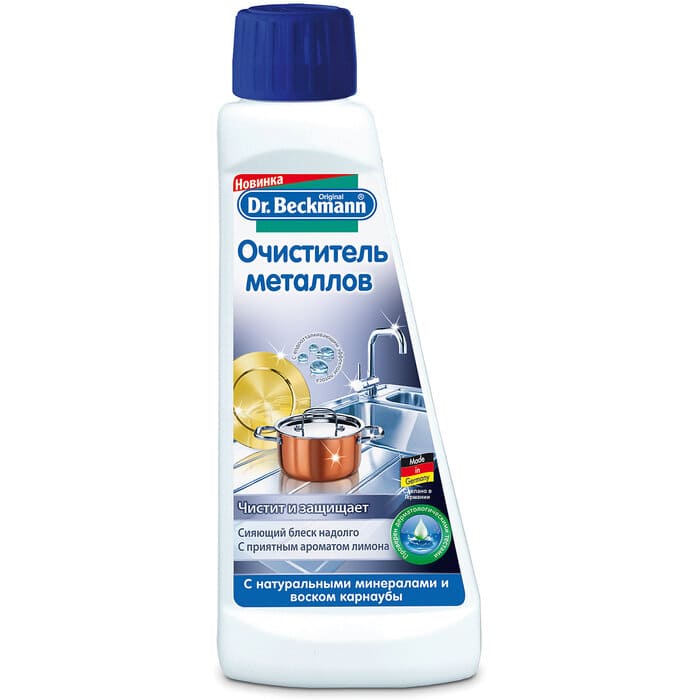 - a high-quality German drug. To clean, just pour 250 grams of product into the drum and turn on a long high-temperature wash. After finishing, no additional rinsing is necessary.
- a high-quality German drug. To clean, just pour 250 grams of product into the drum and turn on a long high-temperature wash. After finishing, no additional rinsing is necessary. - Topper Express descaling cleaner
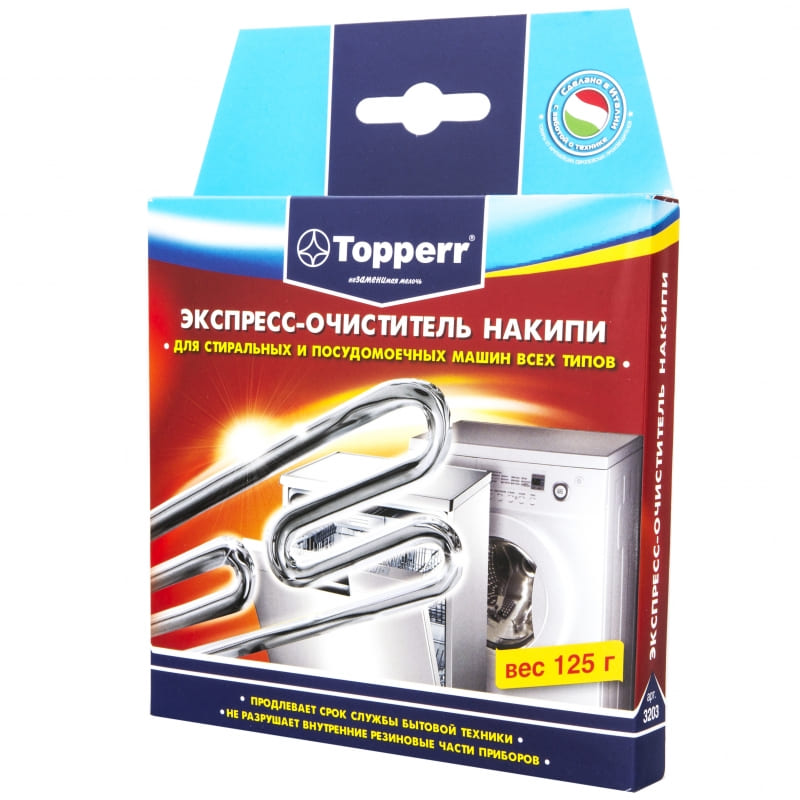 - an effective means for removing solid deposits from the surface of the drum and heating element. The Italian manufacturer used harmless components, so it is allowed to be used even in dishwashers.
- an effective means for removing solid deposits from the surface of the drum and heating element. The Italian manufacturer used harmless components, so it is allowed to be used even in dishwashers. - Tiret
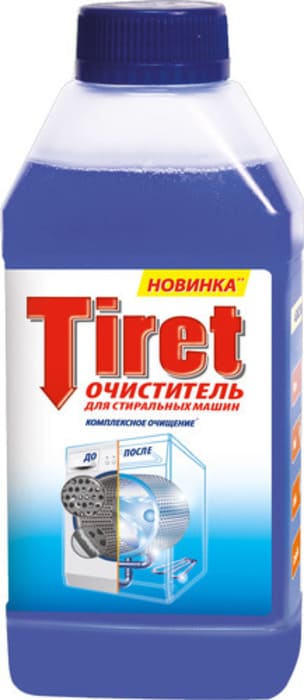 - an effective Russian cleaner for washing machines. Removes scale, old detergent deposits and dirt. It is recommended to use 2-3 times a year.
- an effective Russian cleaner for washing machines. Removes scale, old detergent deposits and dirt. It is recommended to use 2-3 times a year. - Magic Power
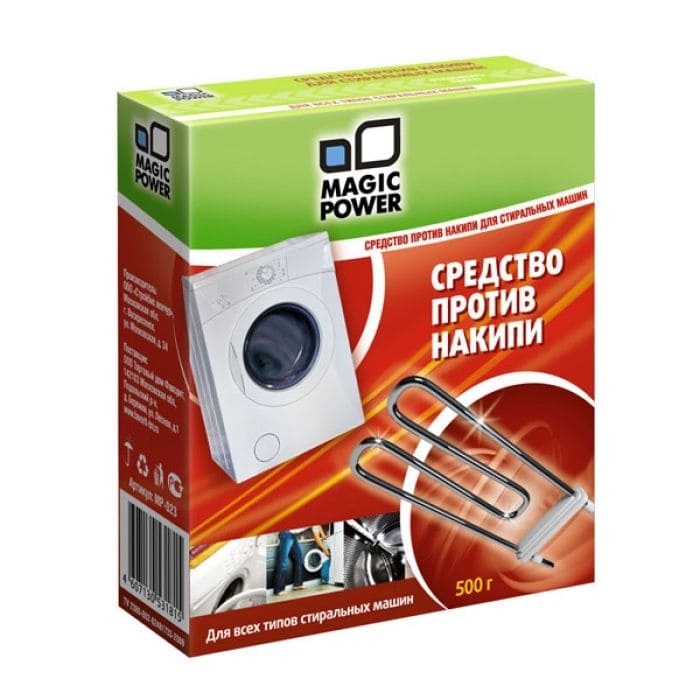 - a German remedy that comes in powder or gel form. Perfectly fights dirt and old accumulations of fat.
- a German remedy that comes in powder or gel form. Perfectly fights dirt and old accumulations of fat. - Tornado
 - a product for preventing and removing scale, which is used together with washing powder. It works well in any mode and temperature.
- a product for preventing and removing scale, which is used together with washing powder. It works well in any mode and temperature.
Complete cleaning of washing equipment
To carry out a complete cleaning of the automatic machine, you need to pay attention to all accessible parts of the equipment. External dirt can be cleaned with a damp sponge, internal parts - using any of the above recipes. It is important to carefully handle every detail of the device, because it is this that can cause serious damage in the future.
Cleaning the rubber seal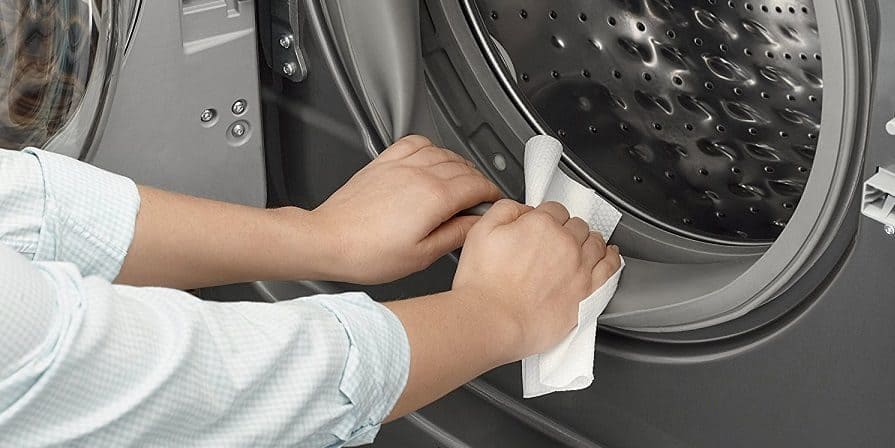
The folds of the cuff are always dark and damp. When dirt gets in there, it creates an ideal environment for the development of mold and mildew. Therefore, it is recommended to wipe the elastic band once a month with a sponge soaked in a soda solution. In this case, you should try to move the seal as far as possible and wipe each of its folds along its entire length. In horizontal loading machines, dirt most often settles in the lower part, so it is worth going through it several times.
More effective chlorine-containing products should be used if an unpleasant odor occurs. But you shouldn’t get carried away with them, as they can cause deformation of rubber parts and generally affect their functionality.
Cleaning the detergent drawer
The removable tray must be removed from time to time, following the instructions from the manufacturer. Usually a large amount of washing powder and rinse aid accumulates on it. Sticky thick masses should be removed with a brush.You may need to soak the tray for several hours in a solution of any detergent and water. In the place where it is inserted into the machine, blockages and mold also often form. Therefore, here it is also necessary to wipe the surfaces with a soda or chlorine-containing solution. For convenience, you can use a toothbrush.
Cleaning the drain pump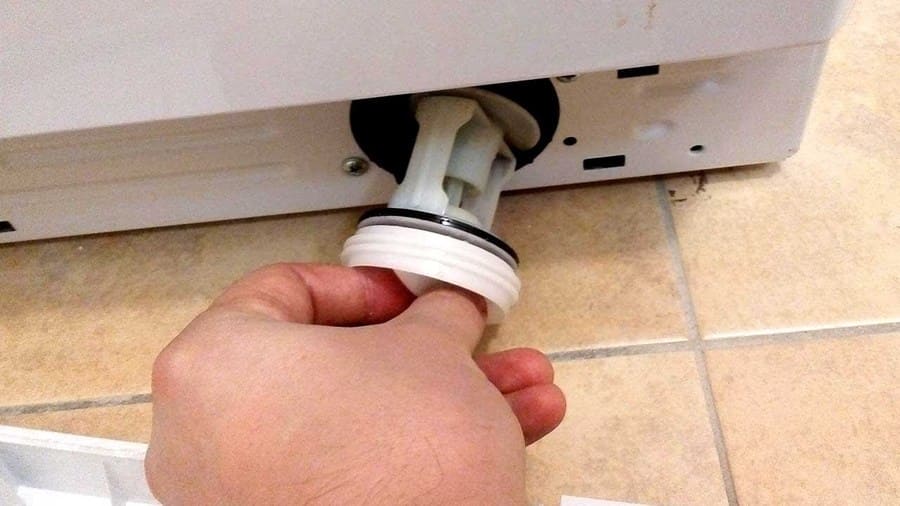
Mandatory and very important point. There is no need to wait until the drain is completely clogged. For preventive purposes, it should be cleaned at least once a year. To do this, open the decorative panel, which is usually located at the bottom of the machine. There is a lid behind it. Before opening it, you need to place a rag and prepare a bowl to collect water. The amount of liquid can be up to 0.5 liters. When it has completely drained, you can begin to remove the accumulated debris. Usually they find coins, hair, lumps of dirt and rust there.
Cleaning the inlet hose filter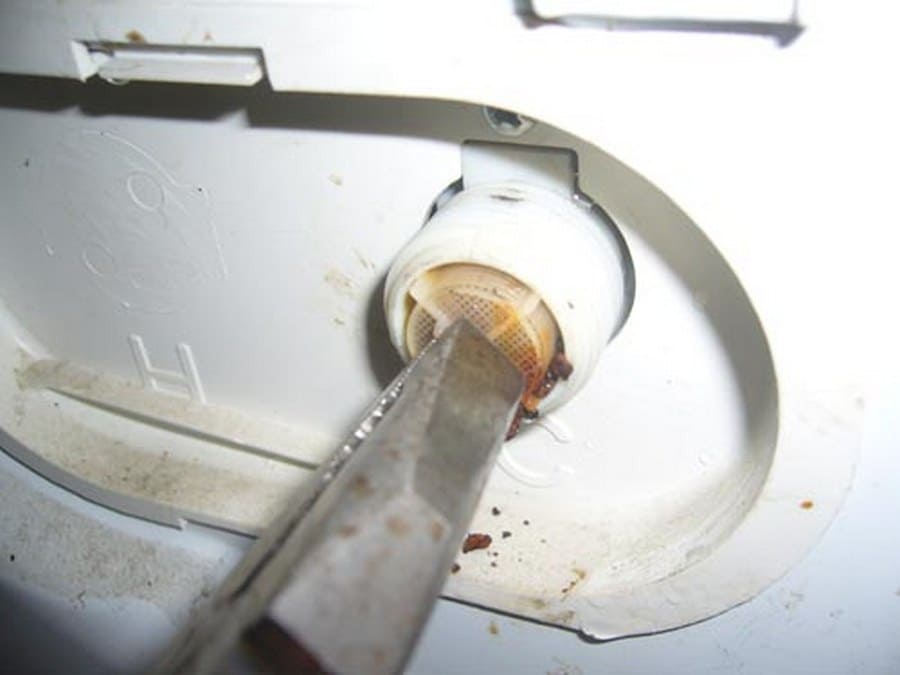
The first signal that indicates the need for this action is the “refusal” of the machine to draw water. Usually this filter becomes clogged with rust and sand. To clean it you will need a toothbrush and pliers. The cold water supply to the device is first shut off, then the hose mounting nut is unscrewed. Use pliers to remove the mesh filter. It must be cleaned with a brush and rinsed in water. After this, the filter is installed in place, the nut is securely tightened, and the water supply is resumed.
How to get rid of rust in a washing machine?
Constant moisture provokes the appearance of rust on the metal surfaces of the machine. When you first notice rusty parts, you should take immediate action. The surface should be treated with vinegar or citric acid.To do this, they must be applied to the desired places and left for 1-2 hours. After time, the rust is rubbed off with a wire brush.
For more severe rusting, use soda slurry. It is applied in a thick layer to the corrosive areas and left for half an hour. After this, remove the soda with a sponge, rinse with water and wipe dry.
In addition to improvised means, you can use professional chemicals. The most effective are the rust remover "PROSEPT RUST REMOVER", the rust neutralizer "YasKhim" and the concentrated "NEOMID 570".
You can use phosphorus-containing carbonated drinks such as Coca-Cola, Pepsi or Fanta. A cotton swab is moistened in liquid and applied to the damaged area for 15 minutes. After this, scrub thoroughly with an iron wool and wipe with a dry cloth. If necessary, the procedure is repeated several times. Usually, this method can very quickly overcome even severe corrosion.
It is not allowed to remove rust using ordinary washing powder, as it can scratch the body of the machine.
Tips for caring for your washing machine
Following very simple operating rules will help to maximize the safety of your equipment and extend its service life:
- Carry out a scheduled complete cleaning of the washing machine. Regularity directly depends on the intensity of use of the equipment. Usually this is once every six months;
- soften the water every time you wash;
- You cannot completely close the hatch door of a non-working machine;
- it is unacceptable to leave the finished wash in a closed machine for a long time;
- Do not put dirty things in the drum of the machine;
- The powder cuvette should be cleaned as often as possible;
- The recommended dosage of detergents must be strictly observed.Do not use too much powder or rinse aid;
- You should use a 70-degree washing cycle at least once a week. Ideally, always use the program at 50-60 degrees;
- After each wash, you need to check the rubber seal and wipe it dry. This also applies to the inside of the door and drum;
- Before loading, dirty items should be shaken out to remove debris and dust, and pockets should be checked for small items.
Many modern manufacturers of washing machines provide devices with built-in self-cleaning functions. This is very convenient, since to carry out cleaning you just need to select the appropriate program. The latest models have an indicator that notifies you of the need to carry out the procedure right now. But if there is no such function, you just need to remember to regularly clean the machine completely. Accumulation of debris, scale formation and clogging of drain holes with small objects in 95% of cases cause global breakdowns. Preventive treatment of internal parts, washing and disinfection not only facilitate the operation of equipment, but also significantly extend the service life declared by the manufacturer.






